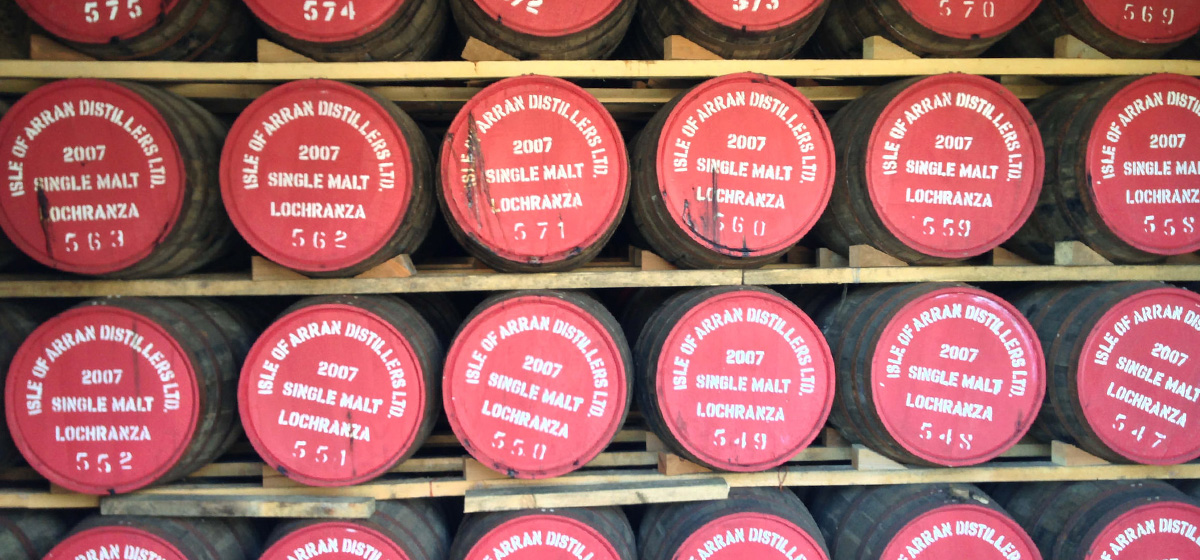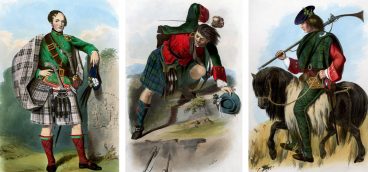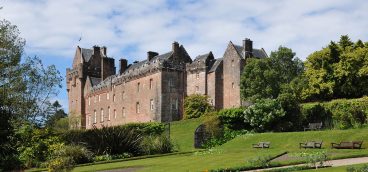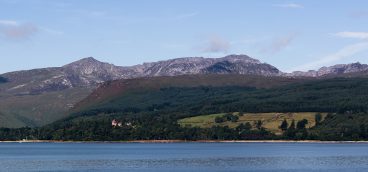Scotch to the Rescue…

Before I describe the “subtle maneuvers” we orchestrated on Lady Jean’s behalf, I want to emphasize that these weren’t all my ideas. They were an amalgam of many conversations with the accountants, estate managers, attorneys, Charles Fforde and Lady Jean herself. I was merely a kind of midwife presiding over their birth.
On the other hand, when I returned to Pittsburgh and discussed the maneuvers with my boss, I naturally took full credit for all of them.
Some parts of our strategy were, shall we say, “positive” subtle maneuvers. Others were, shall we say, “negative” subtle maneuvers—and in some cases maybe not all that subtle. It’s certainly true that you can catch more flies with honey than with vinegar, but it’s also true that you can get further with a kind word and a gun than with just a kind word.
Like everything else on Arran, each of our subtle maneuvers took about five times as long to execute as it would have taken in the United States. On the other hand, in the United States, we wouldn’t have needed any subtle maneuvers. In any event, in case you ever find yourself confronted with the challenge of trying to drag a mid-sized Scottish island into the modern age, here is how you do it. We’ll start with the “positive” maneuvers.
The booze gambit
On my first full day on Arran, Charles Forde had driven me around the island. At one point we were standing on a promontory looking due west over the Firth of Clyde, staring into a mist as thick as cotton batting.
“On a clear day,” said Charles, “you can see Ireland from here. Of course, the last clear day was in 1722.”
Since I couldn’t see Ireland, I turned around and looked behind me. “What’s that?” I asked, pointing.
Charles rolled his eyes. “A bothy,” he said. “Whisky distillery. There are one hundred fifty of them on the island, all illegal.”
I laughed. “Sounds like Knox County, Kentucky,” I said, “where my family comes from. Back there we call it ‘moonshine.’”
“Over here we call it ‘the golden tipple,’” he said. “Believe it or not, back in the late 1700s, Arran was the center of the whisky-making industry in Scotland. The water here is perfect for it. In fact, a friend of Sir Walter Scott once described Arran whisky as ‘the burgundy of all the vintages,’ better than Islay.”
That got me thinking. Since it was only a few years from the late 1700s to 1835, which was the modern era on Arran, maybe good whisky could still be made. Instead of being famous for Aran Isle sweaters, like that imposter island on the other side of Ireland, we would become famous for Arran Isle booze.
We approached all the larger distilleries on the Scottish mainland, and even, in desperation, approached a Japanese whisky maker, but everyone turned us down.
Too dumb to quit, we kept at it, and eventually the Isle of Arran Distilleries opened at Lochranza. (Lochranza is a small town on the north coast of Arran. There is a ruined castle there, see future posts.)
Several years later, the distillery’s visitor center was opened and the first visitor was (perhaps you’ve heard of her) Her Majesty The Queen of England. The following year the initial cask of single malt whisky was tapped and the first sip of that whisky was savored by Scottish actor, Ewan McGregor. Your Humble Blogger was right behind him.
It was the first legal whisky distilled on Arran in 160 years, and you can taste it yourself either by making the impossible trip to Arran or by making the shorter trip to Google, here.
Promoting contiguity
Back in the days of the clearances, the basic trouble was that the run-rig system of land use had broken up the land into very small parcels, most of which weren’t large enough to make economic use of the new farming technologies then coming online.
Precisely the same problem was now haunting Lady Jean on Arran. Lady Jean controlled quite a few acres of land—thousands of acres, in fact—that either had never been leased out or had somehow reverted to her. Unfortunately, that land was scattered all over the island and in-between were hundreds of tenanted inholdings, making economic use of Lady Jean’s land all but impossible.
We could have tried to buy up the inholdings, but who was going to supply the capital for that? Instead, we decided to approach tenants who leased land contiguous to Lady Jean’s land and propose a trade.
The first problem we encountered was the one mentioned earlier: Too many tenants didn’t live on Arran, weren’t much interested in their land, and were hard to get in touch with. As you probably know, many poor neighborhoods around the world suffer from a problem of absentee landlords; Arran suffered from a problem of absentee tenants.
Our initial plan was to offer tenants larger and/or more fertile land if they would give us the land that was contiguous to ours. But this quickly turned out to be hilariously unnecessary. The tenants didn’t care about more land (more work!) or fertile land (to graze two sheep and a goat?) What they wanted was “pretty” land, especially land on the coast.
This was manna from heaven for us. We couldn’t care less about “pretty” land—that and tuppence would get you a cuppa at the Douglas Hotel in Brodick. What we wanted was land adjacent to our own land.
We began successfully trading land and gradually building up the size of Lady Jean’s contiguous farms. In other words, this subtle maneuver worked. Unfortunately, it worked v-e-r-y s-l-o-w-l-y, so that the additional income that was generated by larger contiguous farms took a long time to matter much. Still, every little bit helped.
Next week we’ll finish up with our subtle, and not-so-subtle, maneuvers.








